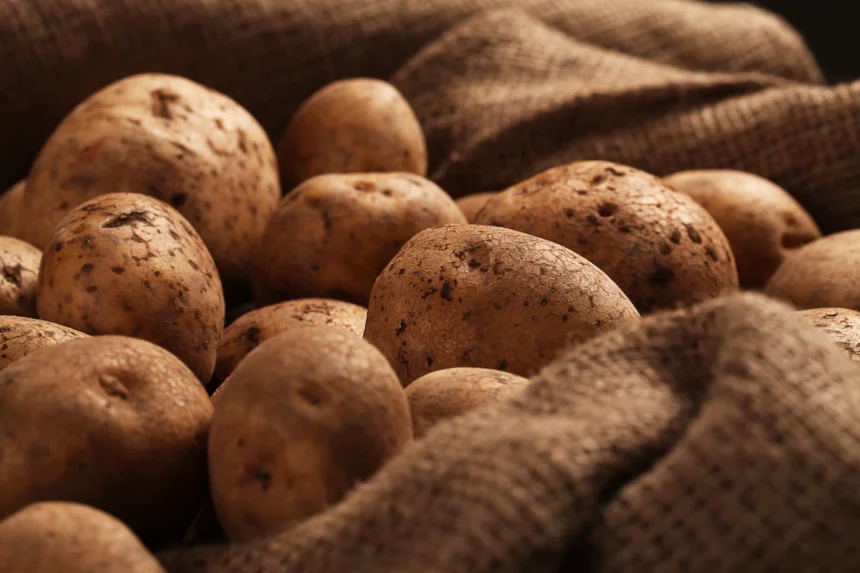There are several potato viruses that can affect potato plants, and each virus may have specific symptoms. Here are some common symptoms to look out for in potatoes that may indicate the presence of a viral infection:
- Leaf mottling or discoloration: Affected leaves may display irregular patterns of light and dark green patches, yellowing, or browning.
- Stunted growth: Infected potato plants often exhibit reduced growth compared to healthy plants of the same age. They may appear smaller or fail to reach their expected size.
- Leaf curling or distortion: Virus-infected potato leaves can become distorted, curl upward or downward, or exhibit abnormal growth patterns. The curling may be accompanied by leaf rolling or twisting.
- Leaf necrosis: Virus-infected leaves may develop necrotic areas, which appear as brown or black spots on the leaf surface. These spots may enlarge and cause the affected areas to die off.
- Reduced tuber size and quality: Viral infections can impact the development and quality of potato tubers. Infected plants may produce smaller or misshapen tubers compared to healthy plants. The tubers may also show discoloration or internal necrosis.
- Yellowing or chlorosis: Yellowing of the foliage, especially between the veins, can be a sign of viral infection. The leaves may become pale or develop a yellowish hue.
- Mosaic patterns: Some viruses cause mosaic patterns on the leaves, where light and dark green patches or streaks appear. The mosaic may vary in intensity and distribution.
- Dwarfing or rosetting: Infected plants may exhibit dwarfing or rosetting, which is characterized by the formation of a tight cluster of small leaves at the top of the plant, giving it a rosette-like appearance.
- Delayed or uneven maturity: Virus-infected potato plants may show delayed or uneven maturation. Some parts of the plant may reach maturity earlier than others, resulting in an uneven harvest.
It is important to note that these symptoms can also be caused by other factors such as nutrient deficiencies, fungal infections, or environmental stress. If you suspect a viral infection, it is recommended to consult with a local agricultural extension service or plant pathologist for accurate diagnosis and appropriate management strategies.
Join 'Farmers Mag' WhatsApp Channel
Get the latest Farming news and tips delivered straight to your WhatsApp
CLICK HERE TO JOIN






